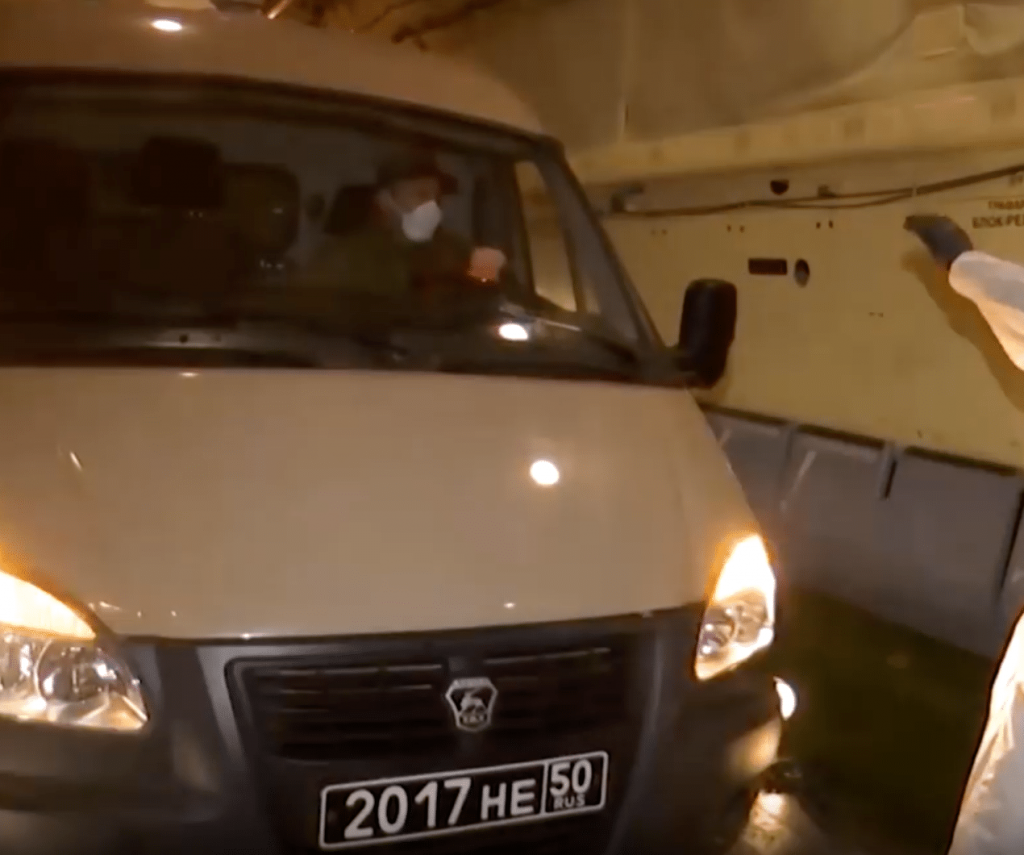A sharp increase in purchases of laboratory primates for the Central Research Institute of Microbiology of Russian Defense Ministry (the 48th Central Research Institute of the Russian Ministry of Defense) – the main developer of protection means against offensive biological weapons in Russia – was among the first signs of such activity. The structure of the research institute includes a branch in Yekaterinburg and a branch on the outskirts of Sergiev Posad city (Moscow region).
On September 4, 2017, Interfax, the Russian news agency, reported that, according to the results of the talks between the deputy head of Rosselkhoznadzor (Russia’s agricultural safety watchdog), Mykola Vlasov and a sales advisor to the Vietnamese Embassy in Russia, Ziong Hoang Minhem, Hanoi intends to increase the supplies of monkeys to Russia. Besides, the agency reported that in late August 2017, Russian experts inspected one of the largest nurseries in Vietnam.
The verification of information through diplomatic channels revealed that by September 2017, Vietnam had been supplying monkeys from a single nursery. At the talks, the Russian side raised the issue of doubling such supplies and making them from two nurseries, and not one, as before. At the same time, all sources emphasized that the primates were intended for laboratory purposes in the Russian Federation. An increase in the number of supplies of laboratory primates indicates a significant speed up of work related to biological tests.
On July 10, 2017, the Federal State Budget Scientific Institution, N.F.Hamaleya National Research Center for Epidemiology and Microbiology (Center for Epidemiology and Microbiology), placed an order (№0373100043217000211) to prepare the primates to study protectiveness of recombinant antibodies worth 1.8 million rubles. Eight male rhesus monkeys with a body weight of 2-2.5 kilograms aged 1-2 years were to be selected for an experiment in comparative studies.
The specification of this tender was fully in line with the specifications of the identical study, announced on August 7, 2017, by the branch of the 48th Research Institute of Russian Defense Ministry in Sergiev Posad. Tender Order No. 038100097817000160 pointed to research work focused on preparing the primates for comparative studies of protectiveness of recombinant antibody clones that neutralize the Ebola virus. The application envisaged the supply of 12 monkeys weighing from 2 to 3 kilograms – the Javanese macaque (Macaca fascicularis) for further experiments, transferring them to “the 48th Central Research Institute of Russian Defense Ministry”. Delivery cost was 2.4 million rubles. However, there is no information the Ebola virus vaccine was developed by the 48th Central Research Institute of Russian Defense Ministry or one of its branches and such information was not detected through any other information channels. It is known that the institute was developing a multiplex reagent set to detect Ebola virus RNA. But volumes of work raise doubts whether that direction was the only one.
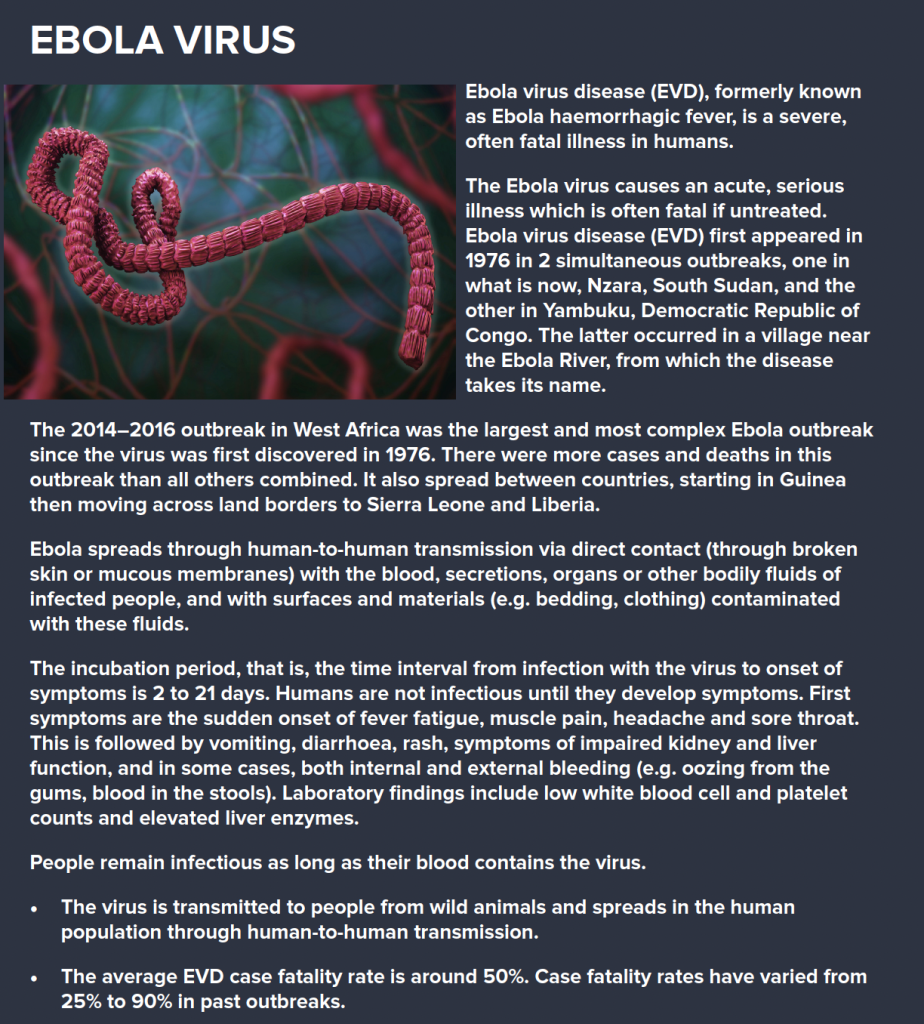
On July 14, 2017, the Federal State Budget Scientific Institution, National Research Center for Epidemiology and Microbiology placed an order No. 0373100043217000216 to study protectiveness of recombinant antibodies in the combination therapy of Ebola fever (Ebola virus) worth 8 million rubles. The Center for Epidemiology and Microbiology is improving the GamEvac-Lio and GamEvac-Combi vector vaccine, developed in 2015 and registered in January 2016. The genetic material of human-safe adenovirus and vesicular stomatitis virus with a built-up gene containing information about the structure of the Ebola virus protein is taken as the basis for the vaccine. On July 4, 2017, the agency ordered the Patent Hatchery LLC support services to apply for a vaccine invention in the Republic of Guinea. It is officially known that the vaccine was actively used in the Republic of Guinea in 2016, indicating a high level of its readiness.
In 1996-2000, the 48th Research Institute of Russian Defense Ministry studied the genetic basis of Ebola virulence, and in 2000 there was an artificial infection of guinea pigs (not typical carriers) with the Ebola virus, which indirectly signifies the work intended to spread the virus.
According to Victor Maleyev, Academician of the Russian Academy of Sciences, deputy director for the Central Research Institute of Epidemiology of Rospotrebnadzor
(The Federal Service for Supervision of Consumer Rights Protection and Human Well-Being), it is impossible to establish an Ebola infection environment in the Russia. He claims that Ebola virus is a natural focal infection. Its occurrence and distribution are possible only in tropical forest range.

In Russia, the Ebola virus infection occurred twice: in 1996 and 2004. In both cases, the infestation followed by death arose from careless handling of the virus by laboratory assistants of the 48th Central Research Institute of the RF Ministry of Defense (1996) and the Vector Center (2004). This fact indicates that the 48th Central Research Institution of Russian Defense Ministry has been studying Ebola at least since 1996. Terry Fredeking, president and founder of Antibody Systems (Texas, USA), has been working and investing in Vector’s Ebola virus study for five years. However, according to him, an institution’s laboratory assistant infection case in 2004 was caused by the research that went beyond the works conducted with his company and he was not aware of them. Fredeking also noted that Vector informed neither the WHO, nor the directors of their own laboratories about the infection case.
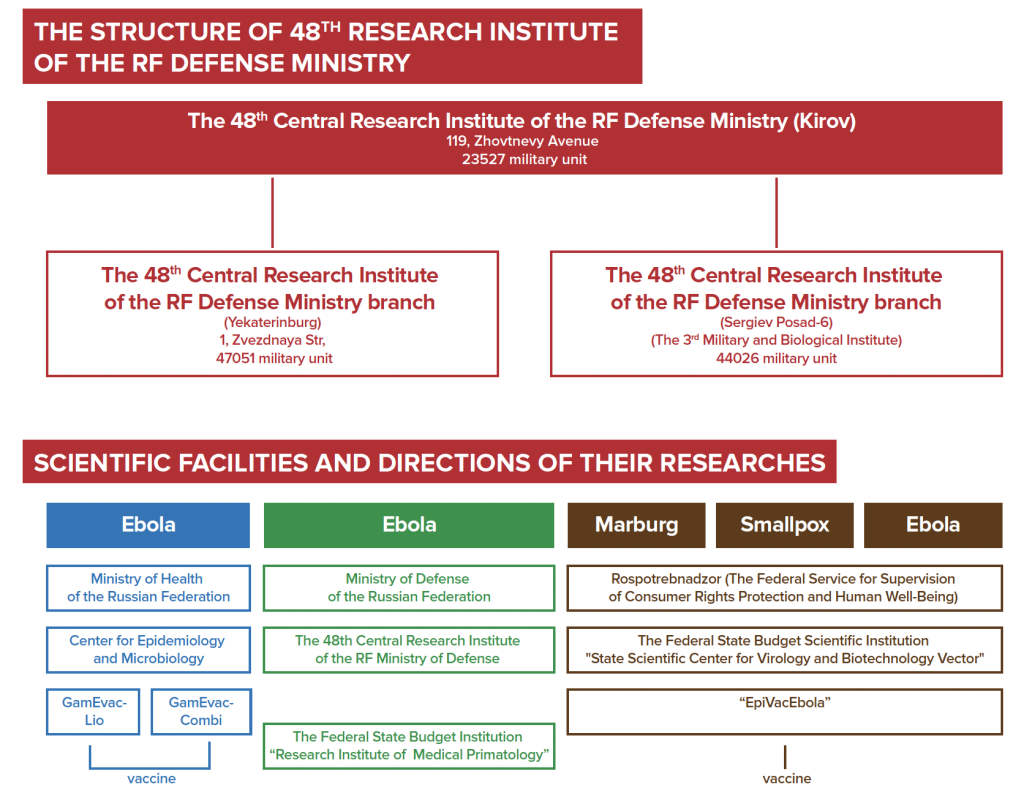
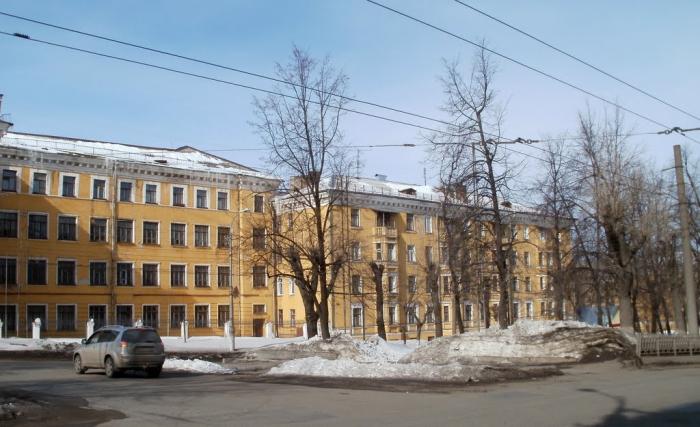
Market experts point out that Ebola vaccine has a very limited market and is unlikely to bring big profits. That puts the economic feasibility of Ebola virus research in question, because the virus is naturally uncharacteristic for the territory of the Russian Federation and does not require a simultaneous concentration of efforts from several scientific institutions, particularly the 48th Central Research Institution, under the jurisdiction of Russian Defense Ministry.
The low estimation of Ebola fever spread likelihood in Russia and its market potential contradicts the number of studies related to the virus in 2017, particularly conducted by the 48th Central Research Institute of Russian Defense Ministry, after the Russian GamEvac vaccine had been registered a year earlier.
The works of the Federal State Budget Scientific Institution “State Scientific Center for Virology and Biotechnology Vector” of the Federal Service for Supervision in the Field of Consumer Protection and Human Welfare” (Vector) also have signs of biological weapons development studies.
According to official data, in 2004, the Vector laboratory, engaged in Ebola and Marburg viruses’ research, was liquidated, and its leader A. Chepurnov was dismissed (following laboratory assistant’s Ebola infection and death case). The Vector itself was handed over to Rospotrebnadzor in 2005.
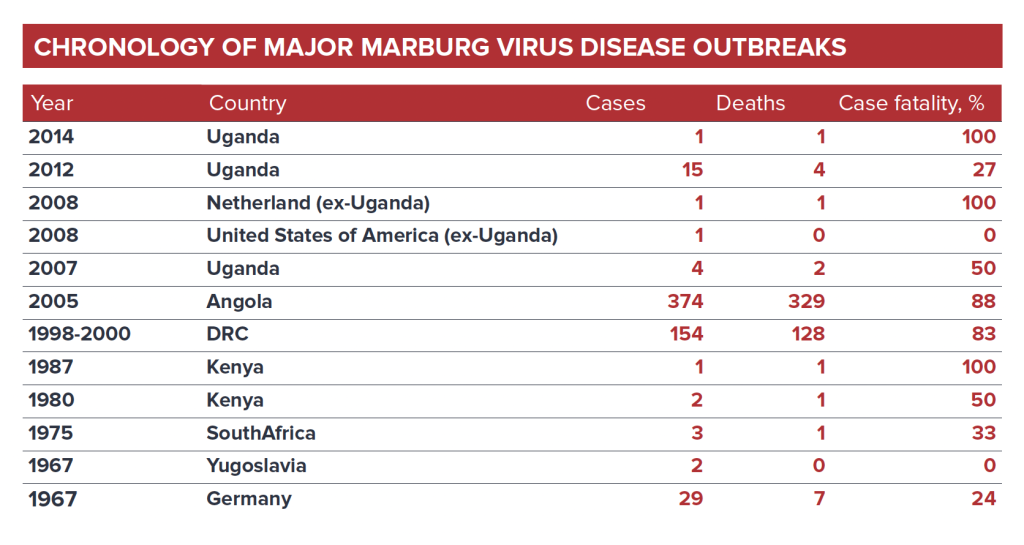
There was no information whether that laboratory was restored. However, in 2014, the Vector took part in the Ebola vaccines testing by mobile laboratory in Guinea. The staff of the institution was also in Liberia. In Guinea, the Vector worked with its own development of EpiVacEbola, developed under the Russian Government’s order.
In October 2014, employees of the Regional Directorate of the Ministry for Emergencies of Novosibirsk practiced acceptance and air transportation of those infected by Ebola virus. The exercises were attended by 2000 people. On November 28, 2016, the Vector ordered air delivery of biological material from the Republic of Guinea to Novosibirsk. Thus, the Vector had been preparing to receive biological samples from the locations of Ebola outbreaks in Novosibirsk for two years.
Officially, the Vector is developing several vaccines to prevent Ebola fever, in particular, EpiVacEbola. Meanwhile, Alexander Agafonov, the Vector deputy director, stated in 2014 that his institution is – “practically the only institute in Russia conducting research in this area». Three detected agencies that work with the Ebola virus deny this information.
Several tender purchases by Vector clearly shoe that some limited access research is being conducted. Thus, every year from 2014 to 2018, the Vector holds tenders for the supply of courier services (e.g., №0351100000717000023). The Vector also orders special communications services (№0351100000716000251) and encryption and document communication services (№0351100000716000004) from a single supplier, and on November 10, 2014, it announced a tender for the supply of IP-phones worth 647,620 rubles (No. 031100000714000328). The special connection for the Vector facility is provided by the Office of Special Communications and Information of the Federal Guard Service of the Russian Federation in the Siberian Federal District.
Such tenders are absent in the Federal State Budget Scientific Institution, National Research Center for Epidemiology and Microbiology and not peculiar to a civilian object. Also, in June 2017, the Vector ordered services of the Gamma federal unitary Research and Development enterprise (№0351100000717000041) for periodic inspection of the premises to meet the information security requirements, which is also a sign of work with classified information, and goes beyond the scope of measures to protect commercial secrets. In June 2015, the agency ordered a performance of the anti-terrorist security and technical strengthening overhaul, a complex of physical protection of a critically important facility and its engineering systems. A year later, in June 2016, the Vector ordered the major repairs for the fence structures of the “infectious” zone of the corps number 104/1 premises, indicating a system-based strengthening in security measures and protection of the territory.
At the beginning of the 1990s, according to Kanatjan Alikbekov, the former First Deputy Director of Biopreparat, Soviet Biological Weapons Development Agency (Kenneth Alibek), the Soviet Union was developing the concept of combining Ebola virus with smallpox virus as highly contagious biological weapon. The Vector is the only facility in Russia, which stores smallpox strains.
In this context, the “Development of mass-spectrometric methods for the analysis of NIOCH-14 chemical substances and metabolites in tissues of laboratory animals and studying the pharmacokinetics of its finished dosage form in preclinical studies (№31401256430)” research work calls attention. NIOCH-14-drug is associated with the treatment of smallpox.
On September 9, 2016, the Siberian Times newspaper announced a 34-year-old Rinat Maksyutov was appointed a new Vector director, – a smallpox expert who had been working at the center since 2003. Prior to his appointment, heacted for the Vector’s deputy director for academic affairs. Alexander Agafonov, who has been working at the Vector since 1983, is Maksyutov’s deputy, so he could have been involved in the development of biological weapons for at least seven years in Soviet times. His scientific direction also comprises the study of smallpox and the infectivity of its strain.
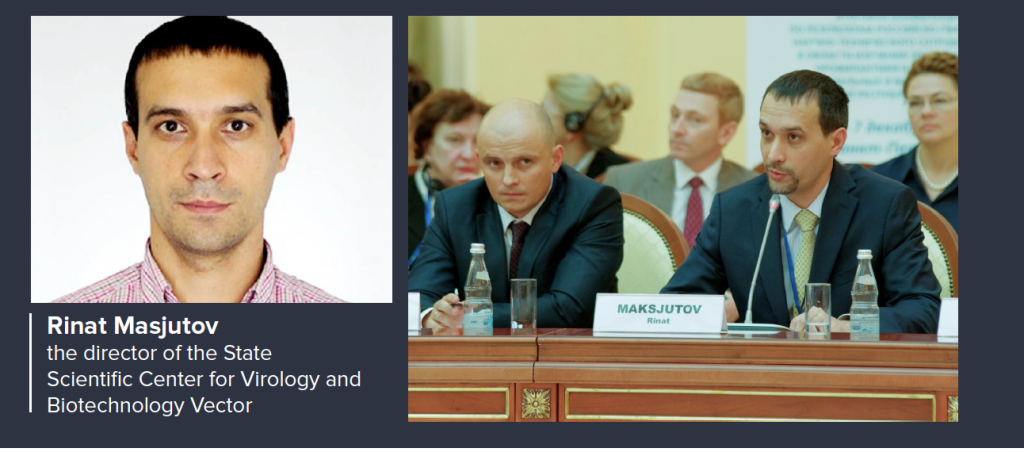
In June 2017, Maksyutov presented his thesis, where the 48th Central Research Institute of the Russian Defense Ministry was the leading agency. The thesis included research on changing the viral DNA in order to let smallpox acquire new properties. The study was officially focuced on developing the fourth generation smallpox vaccine. It remains unclear, however, why the 48th Central Research Institute of Russian Defense Ministry was named as a leading agency, provided that the research is carried out by Vector. Sergei Borisevich (March 9, 1967), the head of the 48th Central Research Institute of Russian Defense Ministry, was the one who approved the report on Maksyutov’s thesis on behalf of this institution.
In December 2017, Borisevich (the fever of the West Nile, 2009, was the subject of his research), participated in a scientific conference in St. Petersburg on scientific and technical cooperation between Russia and Guinea. Borisevich addressed the issue of Ebola-Reston, Ebola-Zaire, Ebola-Sudan, Ebola-Bundibugyo, Thai Forest and Marburg viruses’ detection in his report. The data were based on the studies conducted by Vector laboratory in Guinea. This speaks for a very close cooperation between the 48th Central Research Institute of Russian Defense Ministry and the Vector. Rinat Maksyutov, the Vector’s director, delivered his report at the same conference as well.
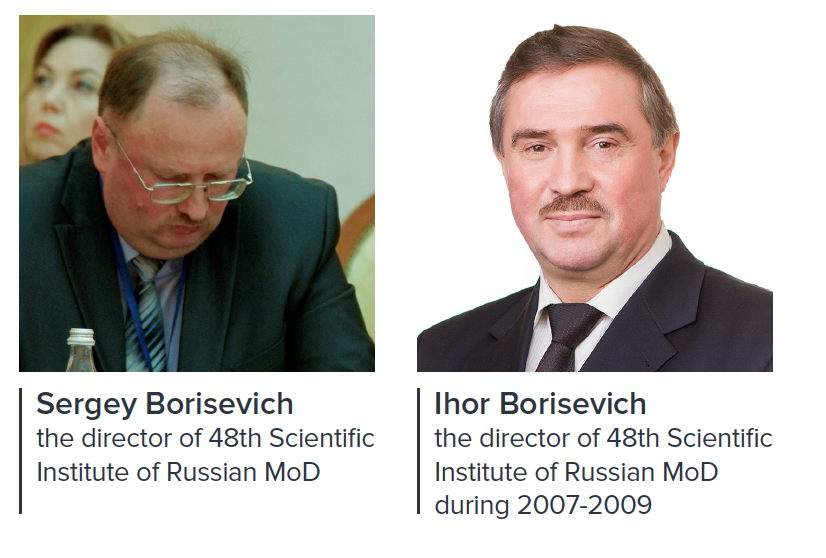
From 2007 to 2009, the 48th Central Research Institute of Russian Defense Ministry was headed by Sergei Borisevich’s elder brother (19.03.1963) – Colonel Igor Borisevich, who worked in military virology (the 15th Directorate of Soviet Defense Ministry), a branch of the 48th Central Research Institute in Zagorsk, since 1986, and, in 1994, defended the thesis concerning the diagnosis and treatment of Ebola fever. Thus, there is a relationship between heads of the 48th Central Research Institute of Russian Defense Ministry, the Vector, as well as their specializations in Ebola and smallpox viruses.
On October 2, 2017, the Vector entered a tender to order the works for “Synthesis of Epitopes of the Antibacterial Determinants of the Marburg Virus Surface Protein” (Marburg virus). This virus also refers to the haemorrhagic fever; it is similar to Ebola virus in its effect and has been studied by the Vector until 2004. In particular, it is reliably known that Variant U strain of the Marburg virus was generated at the Vector, and it was taken by the Ministry of Defense of the USSR as a component for biological weapons in 1990 (1991). In the 1980s, the Soviet Union experimented with the aerosol form of Marburg virus in tests on primates and determined that the infection required only a few virions (single, complete infectious parts of the virus consisting of RNA or DNA nucleic acid). According to Alikbekov, Soviet scientists studied the possibility of loading the Marburg virus into the MIRV (Multiple Independent Re-entry Vehicles). As early as 1991, the Vector was ready to produce Variant U in large volumes for loading into MIRV with 10 separate warheads.
Some more Vector’s tenders, signifying the research on the spread of viruses, came in view in the course of the analysis:
Creating a model of infectious diseases in the primates of Macaca fascicularis,
Creating a model of infectious diseases in the primates of Macaca mulatta,
Creating a model of infectious diseases in green monkeys.
According to Viktor Maleyev, the issue of what will happen if certain bacterial compounds are massively applied is under study. “Such situations are modeled, forecasts are made”. Actual duplication of some studies by the 48th Central Research Institute of Russian Defense Ministry, the Vector and the Center for Epidemiology and Microbiology in the field of Ebola virus research, at least during 2017, may indicate the various goals and challenges these scientific institutions are facing.
If to speak about the Center for Epidemiology and Microbiology, the development of vaccines is highly probably the goal.
In the case of Vector, there is a probability of parallel work on a weaponized virus with a simultaneous search of the corresponding vaccine. There is an exchange of information and research results, as well as the coordination of work between the Vector and the 48th Central Research Institute of Russian Defense Ministry. It can not be ruled out that Vector is an experimental base for the 48th Central Research Institute.
Besides, the active influenza virus research (for example, №0351100000717000174) by Vector, the results of which can be used to increase the contagious nature of weaponized virus, is causing anxiety. Similar works are carried out, in particular, by scientific institutions in Hanoi (Vietnam). In November 2017, the Vector ordered the delivery and commissioning of a climatic dynamic installation to simulate the transmission of influenza virus to laboratory animals.
As of today, no connection between influenza virus research and studies signifying the weaponized virus development has been detected.
As for the 48th Central Research Institute of Russian Defense Ministry, there is a high probability that weaponized virus is being developed on the basis and with the properties of haemorrhagic fevers. The volume of work performed by this research institution is not comparable with the task of developing a multiplex set of reagents for detecting Ebola and Marburg viruses’ RNA. The latter is most likely a by-product of more significant research. The fact that people engaged in weaponized virus development in Soviet times, take part in the research comes under notice as well.




